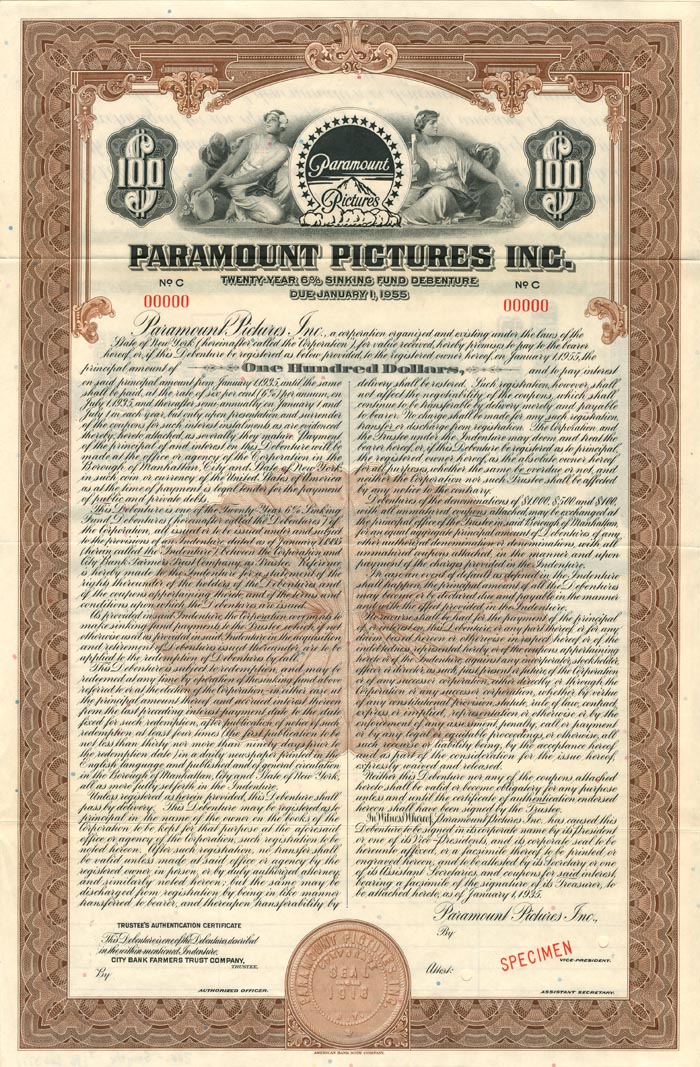Paramount Pictures Inc. - Specimen Bond
Inv# GB5385 Specimen Bond
$100 Specimen Bond. Very Rare! Paramount Pictures Corporation, widely recognized as Paramount Pictures or simply Paramount, is an American company engaged in film production and distribution, operating as a subsidiary of ViacomCBS. It ranks as the fifth oldest film studio globally and the second oldest in the United States, following Universal Pictures. Notably, it is the only member of the "Big Five" film studios that remains situated within the city limits of Los Angeles.
In 1916, film producer Adolph Zukor signed contracts with 22 actors and actresses, each of whom was honored with a star on the company logo. In 2014, Paramount Pictures achieved a milestone by becoming the first major Hollywood studio to exclusively distribute its films in digital format. The company's headquarters and studios are located at 5555 Melrose Avenue, Hollywood, California, United States. Paramount Pictures is also a member of the Motion Picture Association (MPA).
Stock and Bond Specimens are made and usually retained by a printer as a record of the contract with a client, generally with manuscript contract notes such as the quantity printed. Specimens are sometimes produced for use by the printing company's sales team as examples of the firms products. These are usually marked "Specimen" and have no serial numbers.










Ebay ID: labarre_galleries